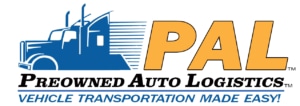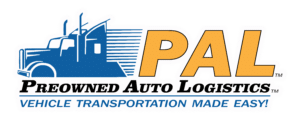Get the Scoop on Shipping Recreational Vehicles and Large Crafts
As spring gets closer, you may be planning some fun on the water or in the backwoods. Have you purchased a new boat, 4-wheeler, or RV that you need delivered? Would you like some help getting your new toy where it needs to be this season?
At PreOwned, we routinely ship recreational vehicles, and even larger crafts like boats and single-engine planes. Here’s what you need to know …
Shipping Recreational Vehicles
Shipping a recreational vehicle isn’t that different than shipping a regular car. However, you will want to consider a few issues.
First, check your insurance coverage. It’s useful to know what your personal insurer will and won’t cover. Not all insurers cover vehicles in transit. At PreOwned, we provide liability insurance required by the Department of Transportation (DOT). If you have questions about our insurance policy, do not hesitate to ask.
Next, prepare your RV for the trip. This process shouldn’t take too long, but it’s an important step so that you can prevent damages during transport. We recommend the following:
- Secure or remove any items hanging on the walls
- Close the latches on all doors, windows, pop-ups, and cabinets. You may even want to tape cabinets shut as an extra layer of precaution.
- Turn off electronics and disconnect the power supply and gas lines.
- Stow any loose items in cargo compartments. Please note that you should remove personal items from your RV before shipping.
- Check your vehicle’s fluid levels and watch for leaks.
- Visually inspect your tires and check for air pressure.
- Make sure your parking brakes function and that your battery is charged.
A representative will inspect your RV when you drop it off and pick it up. This representative will make a note of any pre-existing damage, and check carefully for post-shipping damage. Even with these precautions, it’s helpful to take photos of your RV and document its condition on your own.
By the way, we also routinely ship 4-wheelers, motorcycles, and other recreational toys. Just ask!
Shipping Boats and Jet Skis
If we know one thing about boat owners, it’s that they’re obsessed with the condition of their investment. Boat owners generally come to us with a lot of questions. Here’s the low-down.
Shipping a boat takes a bit of planning. You’ll want to check your options on boat trailers and confirm dates for transport from two weeks to a month in advance. Then, you’ll want to take the time to prepare your boat for shipment. This includes securing any items that may shift during transport. We encourage you to consult your marina or manufacturer for specific questions about securing your particular craft.
Here are a few other things to consider before you plan a shipment:
- Your boat or Jet Ski should be on a trailer in order for us to transport it.
- If you have a boat cover you’d like to use, make sure it’s specially made for transport. Some boat covers are not designed for transport and can flap in the wind, doing unnecessary damage. When in doubt, ask a representative.
- Some customers have chosen to shrink wrap boats for transport. If you decide to go this route, make sure it’s done professionally.
- As always, check your personal insurer to find out if your boat is insured during transport. If you have questions about the insurance PreOwned provides, let us know.
Shipping Single-Engine Planes
PreOwned ships planes, too? Yes! However, there are logistics involved with planes that you’ll want to know.
First of all, because there is so much involved in transporting these machines, PreOwned takes extensive notes on the dimensions of each plane we ship. This helps us provide quality service, and it also helps us stay in compliance with the DOT. Knowing these measurements ahead of time can expedite your shipment. If you’re not sure about the dimensions of your plane, check RisingUp.com. We’ve found this resource to be very informative.
In addition to checking your plane’s dimensions, you’ll want to contact your insurance provider. Your regular insurance may not cover transportation by a third party. And, just as with any other craft, you’ll want to prepare your single-engine for shipment. This includes sealing off openings to prevent damage from moisture, wrapping wings properly, and securing moving parts. You might also consider removing sensitive electronics that might be damaged during transport.
Finally, you’ll need to purge all fuel from your aircraft’s tanks. Some states require you to have a purge certificate verifying that your plane is completely void of flammable fuel. If you are not sure about the requirements in your state, or if you have additional questions about our shipping process, please let us know. Our representatives are knowledgeable and happy to help.



